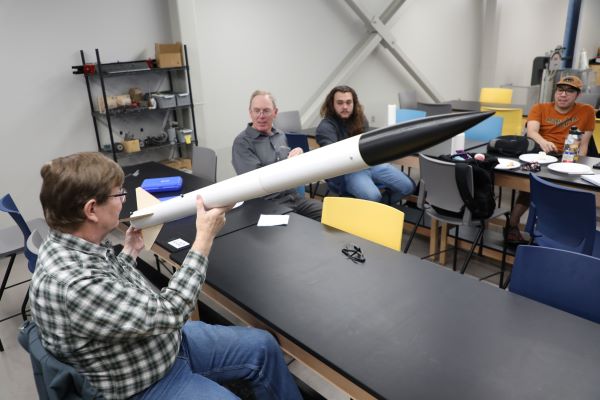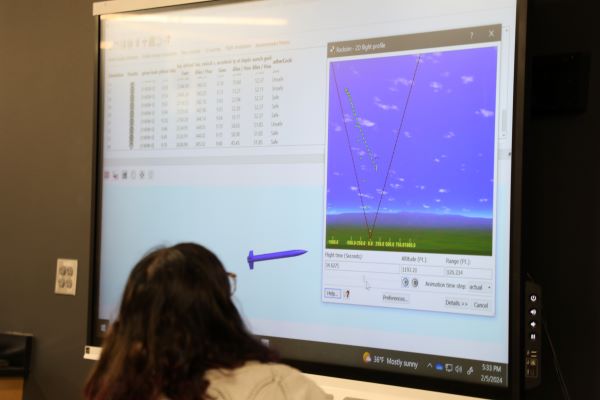Montana Technological University students prepare to launch high-powered rocket for First Nations Launch Competition

Every time the Space Race has gained momentum over the past 70 years, Montana Tech Orediggers have answered the call to push the boundaries of their engineering skills to higher altitudes.
In April of 1958, just weeks after the Jupiter-C, a modified Redstone missile, propelled America's first satellite, Explorer 1, into space, Montana Tech students launched “Fystp,” a two-stage solid-fueled rocket that traveled 962 feet into the air.

In 1967, Montana Tech Professor Charles Herndon spent a summer working with the engineering team at NASA’s Huntsville, Alabama campus to determine the reliability of a hydraulic unit used to start the Saturn V, the rocket that carried crewed flights to the Moon.
And in 2024, as the world watches NASA’s ambitious plan to return humans to the moon and build a basecamp on its surface through the Artemis program, Orediggers are once again setting their sights on the sky.
The Montana Tech Chapter of the American Indian and Sciences Engineering Society (AISES) is working with the Wisconsin Space Grant Consortium, NASA, the Tripoli Rocketry Association, and National Association of Rocketry to launch a high-powered rocket, measuring five to six feet tall, more than 2,600 feet into the air above a launch site Twin Bridges.
The practice launch will prepare the AISES team for the First Nations Launch High-Power Rocket Competition to be held in Kenosha, Wisconsin. The Wisconsin Space Grant Consortium sends parts for the large rocket, and a smaller practice counterpart that students must assemble.
Aurora Beplate is Vice President of Montana Tech’s AISES chapter. She is a freshman mechanical engineering student from Spokane, Washington, who is overjoyed to have the opportunity to participate in the First Nations Launch.
“We spent two days crafting this rocket,” Beplate said of the competition rocket. “We had to go through and learn all the parts. If we are going to be working with high-powered motors, then we really need to understand how everything works.”
The Caliber ISP rockets, manufactured by Loc Precision, are designed to be reusable, with a parachute that allows them to land softly on the ground.
The Tripoli Rocketry Association will travel with the AISES team to Twin Bridges before the competition to conduct a test launch to ensure everything is working properly and is safe. If the test launch succeeds, the association will certify them at Level 1 in Rocketry.
“We have to have a safe takeoff and a safe landing, and we have to be able to pick it up and find it,” Beplate said. “It’s pretty fun.”
The team was able to bond and learn about a smaller model rocket included in the kit, that they have launched multiple times at the base of the Big Butte Trailhead. The smaller rockets run on a motor system that runs on mercury.
“We have little mercury strips we load in with a plug, then when we hook the battery up, it will send an electrical charge, ignite the mercury inside the motor, and ‘boom!’ It’s a chemical reaction,” Beplate said.
Post-baccalaureate civil engineering student Matthew Dang, from Fort Worth, Texas, says he joined the group to make the most of his time at Montana Tech.
“Rocketry isn’t part of civil engineering, but it’s interesting to me,” Dang said.
Jay Yoder, a senior in the Mechanical Engineering program from Raymond, Montana, has more professional aims in mind. He’s taken coursework at Montana Tech that dovetails nicely with rocketry.
“I like rockets,” Yoder said. “My ideal job is working on rockets at a defense company or at NASA. It’s a super interesting field. Rockets are inherently cool.”
The First Nations Rocket Launch will take place April 26-28 in Wisconsin.